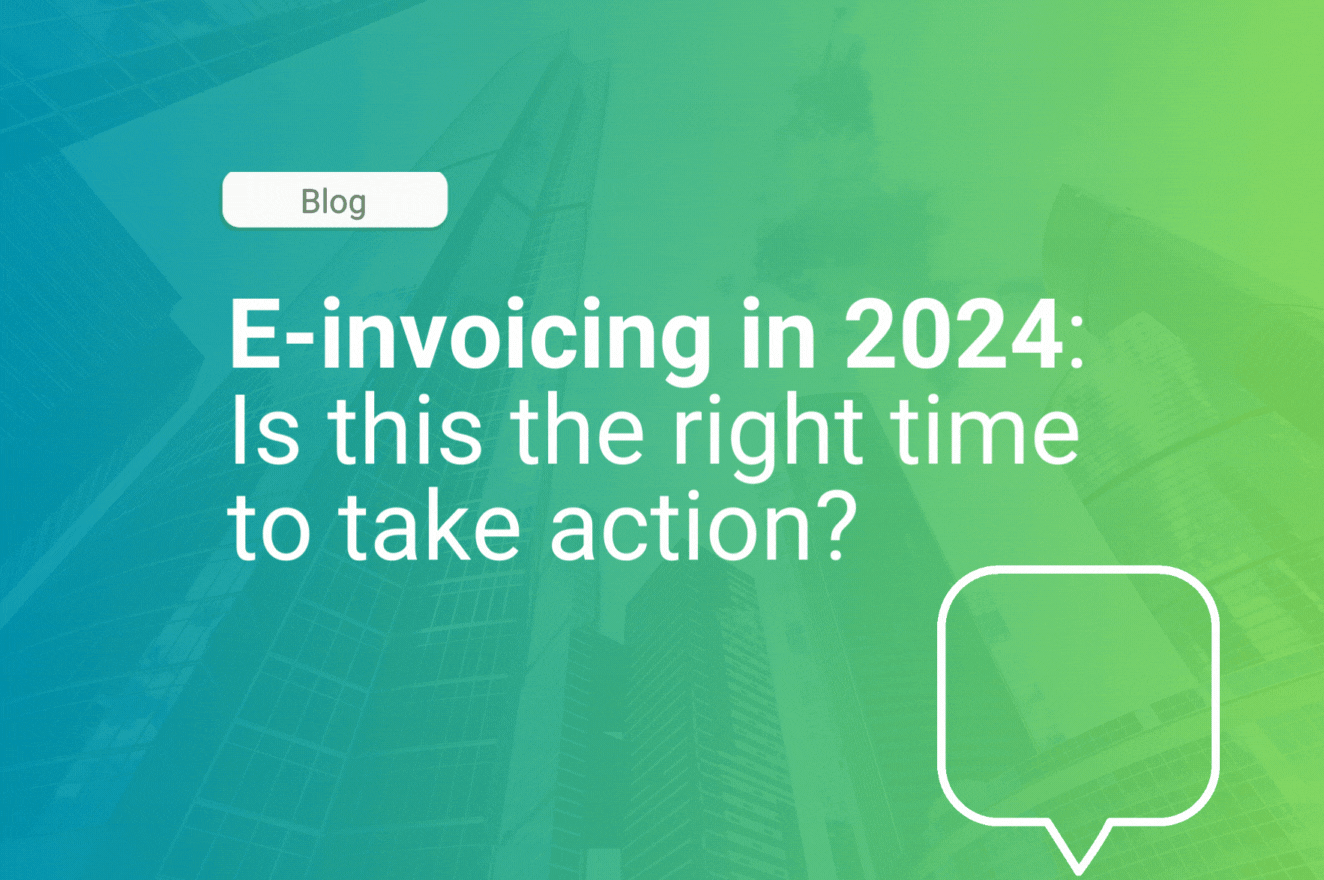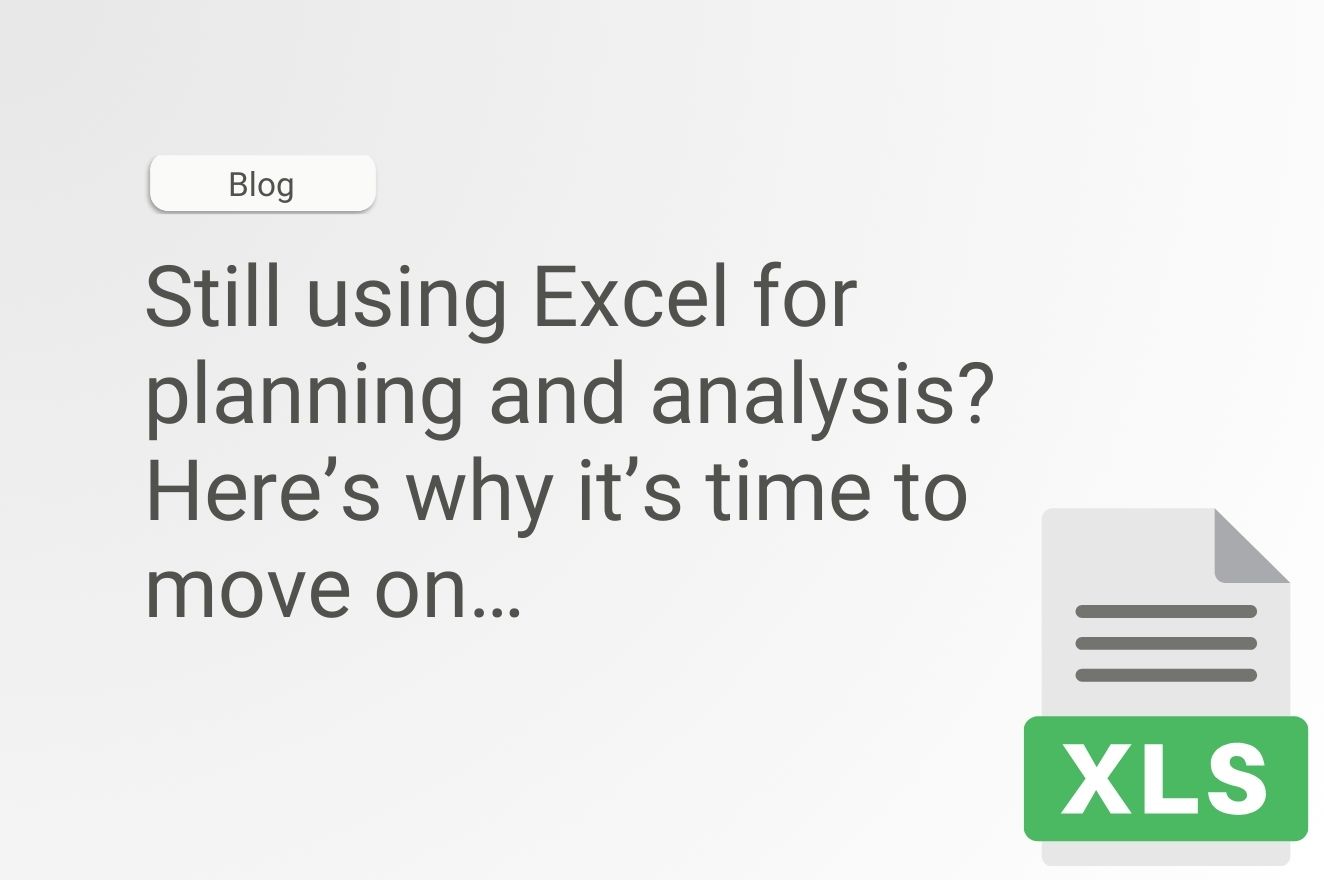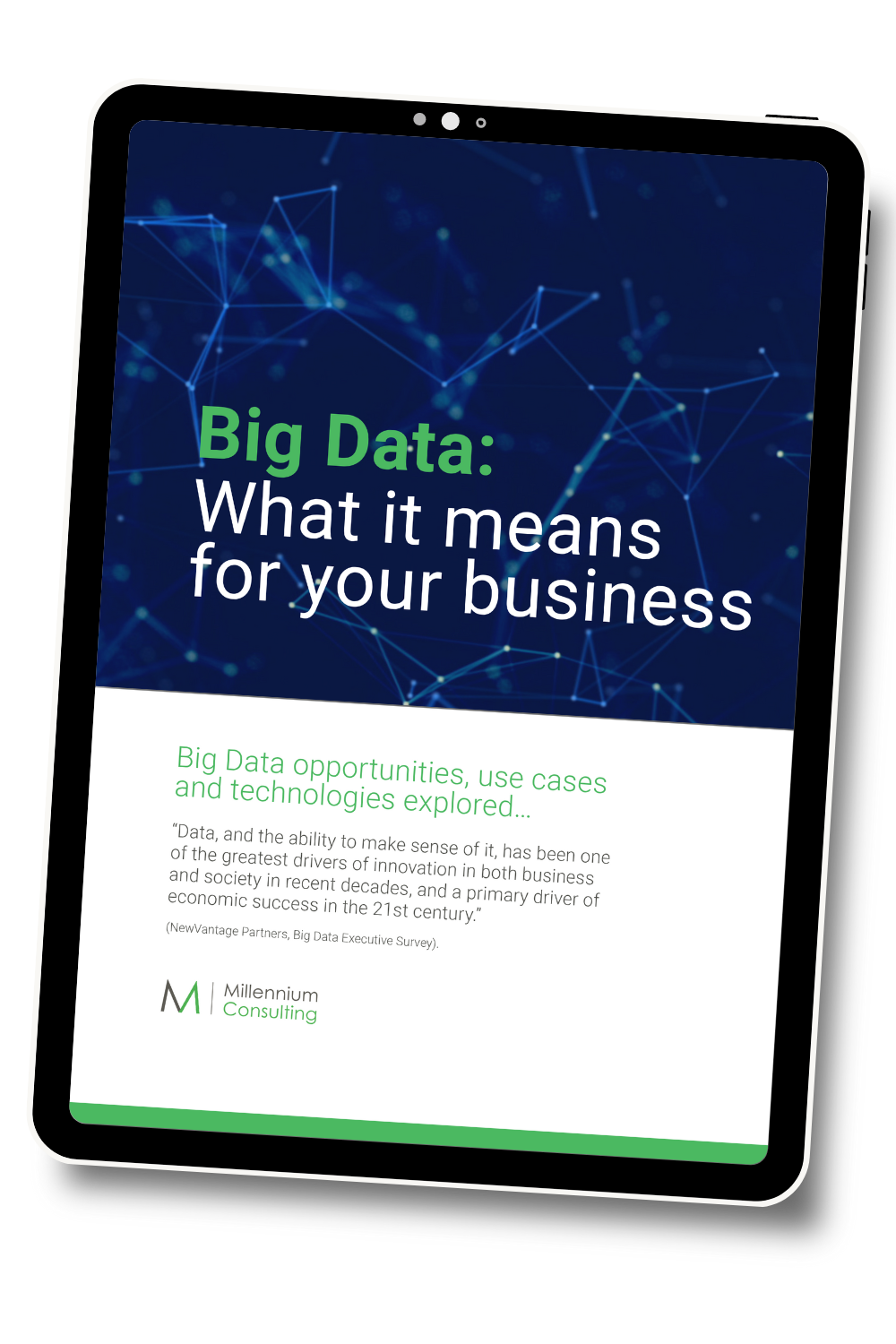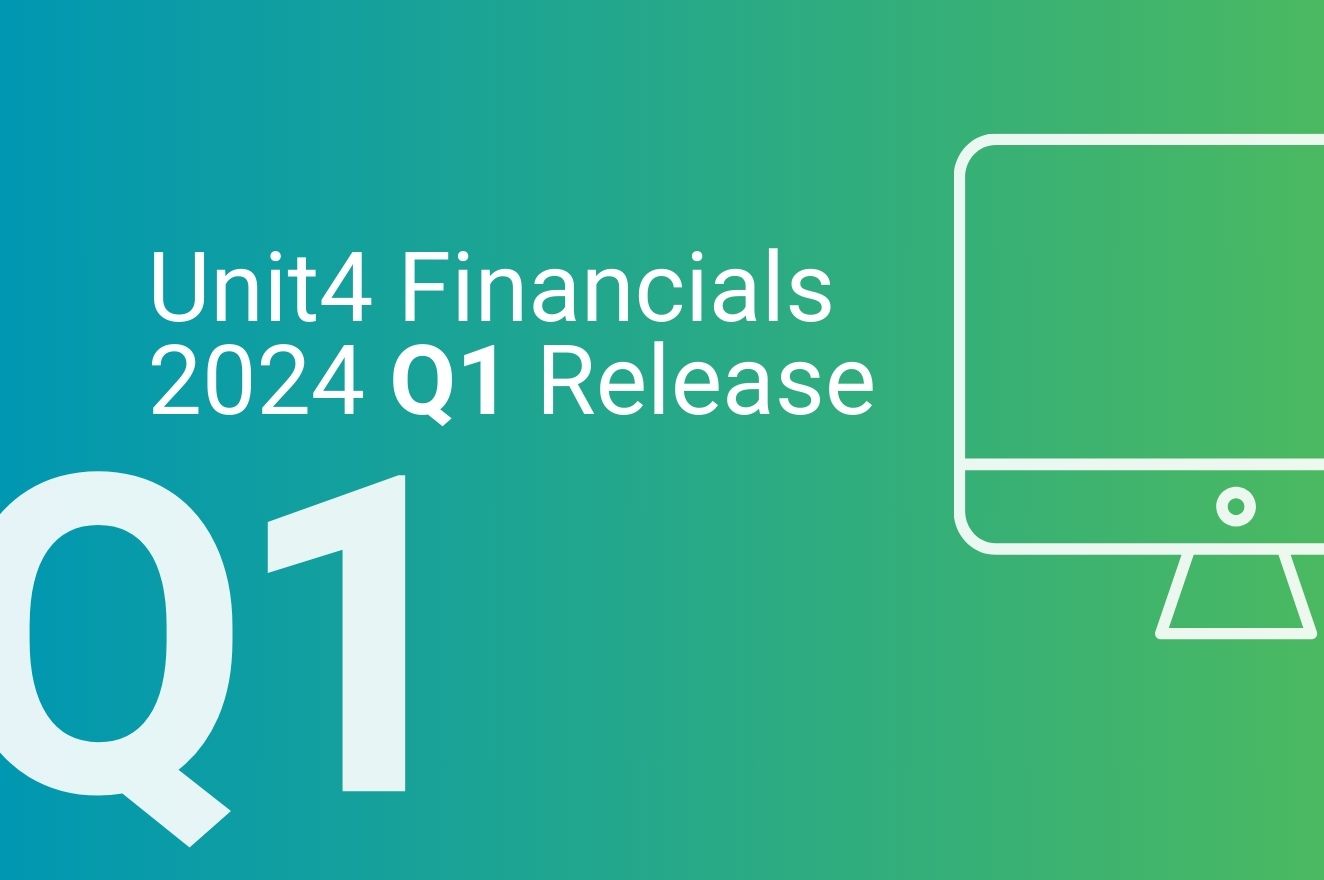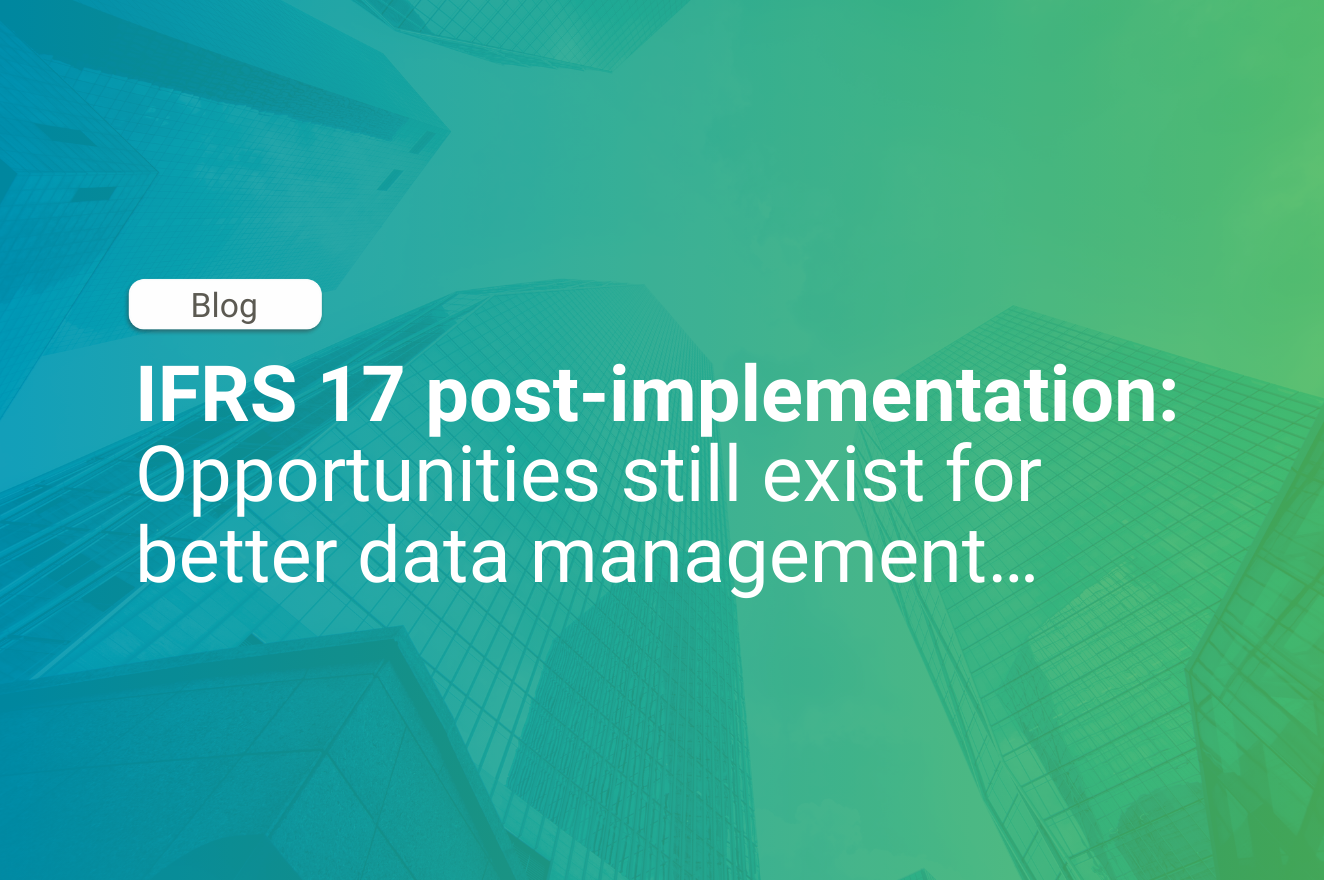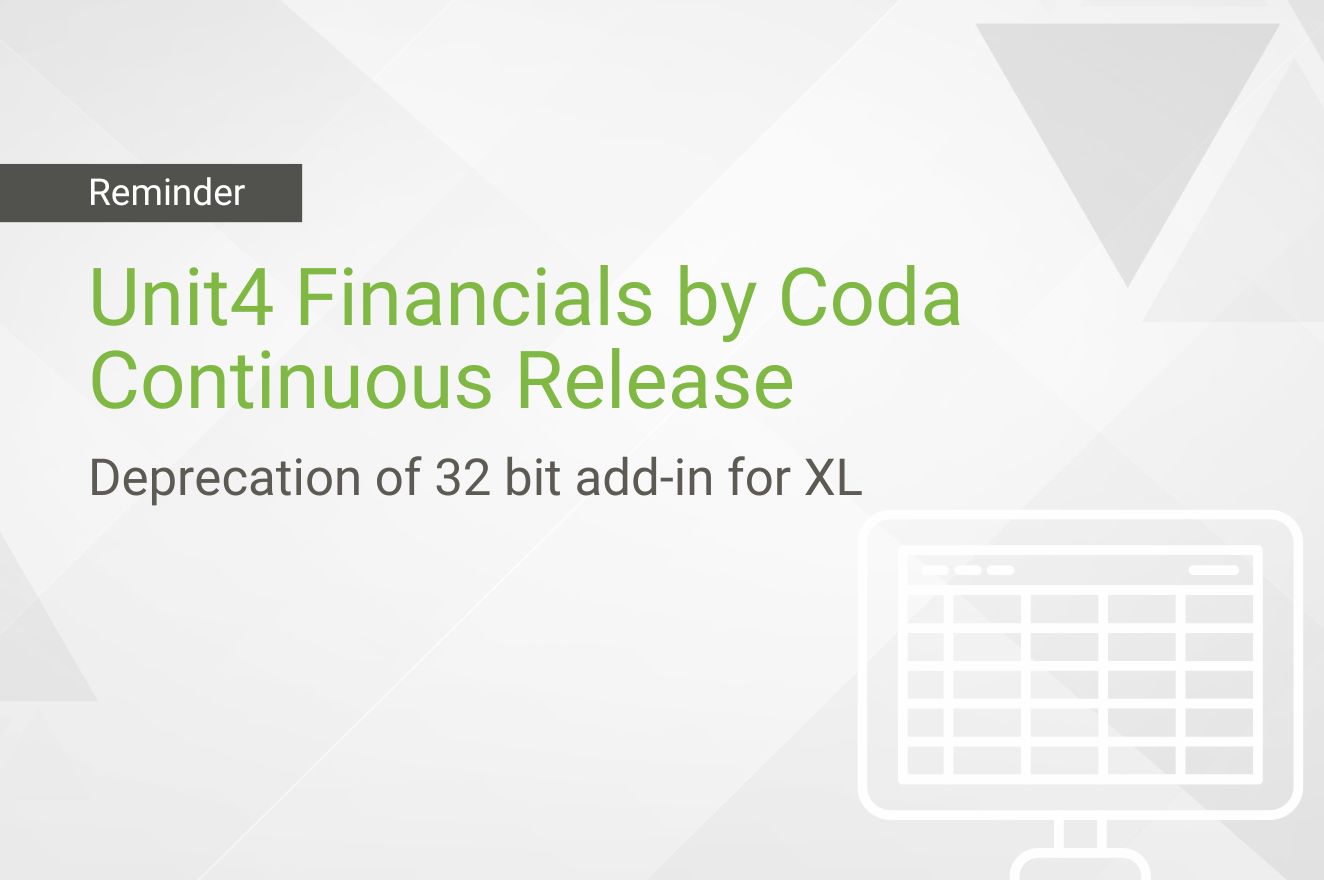E-invoicing in 2024: Is this the right time to take action?
E-invoicing in 2024:Is this the right time to take action?
Should you wait for a government mandate before taking action on e-invoicing?
The smarter play is to keep ahead of the compliance curve - and make digital invoicing a key part of your efforts to optimise finance operations.
By now, the vast majority of businesses have at least some digital elements in play when it comes to billing. This includes the use of accounting or customer relationship management (CRM) platforms for invoice generation and managing reminders. Or it could be as simple as pulling up ready-made templates from Google Drive as and when required.
However, true digital invoicing – aka e-invoicing – goes several stages further than this. This refers to a system whereby invoices are issued, transmitted, received, processed and stored automatically in a structured format.
Despite its business advantages, e-invoicing is one of those areas that often remains underexplored by finance leaders. For some, it’s a case of wait and see on the compliance front; a reluctance to take action until HMRC makes further inroads on mandated digital invoicing. For others, there’s a realisation that e-invoicing could well result in significant benefits to the business, but an overhaul of invoicing processes is considered too much of a hassle to contemplate.
So, are you missing an opportunity by not taking action in this area? What are the stumbling blocks to digital invoicing adoption – and how can they be overcome? Here’s how the land lies in 2024…
Mandatory e-invoicing: the current state of play
As our introductory guide explains, with e-invoicing, invoices are issued and transmitted in a standardised, machine-readable format – very often XML (Extensible Markup Language). This structured format characteristic means that invoice data can be read, captured, extracted, and acted upon automatically by buyers’ and sellers’ accounts solutions without the need for human input and without interoperability issues.
The same technology also allows key information to be automatically captured and logged with third parties – hence why tax authorities are big fans of it. If you make digital invoicing compulsory and combine it with an e-reporting requirement, you can capture details of all transactions at the point when an invoice is generated, thereby significantly reducing leeway for VAT fraud and error.
So far, more than 50 countries – including France, Spain, Italy, and Germany – have started implementing compulsory e-invoicing. Various countries – including those within the EU – are at different stages, but the rollout process is similar in each case: a mandate for B2G transactions in the first instance, followed by B2B (the timetable for implementation is usually dependent on the size of the company). Some countries (Italy, for instance) have extended the requirement as far as B2C transactions.
The UK is barely out of the starting blocks on this. If you supply to the NHS, e-invoicing is mandatory. Furthermore, there’s a general requirement for public authorities to receive and process digital invoices if their suppliers want to use them. Other than that, e-invoicing is not mandatory at either B2G or B2B level.
However, the direction of travel is pretty clear. HMRC’s overarching ‘Making Tax Digital’ strategy is focused squarely on reducing the tax gap, with a clear emphasis on “bringing the tax system closer to real-time”. In this context, it is generally accepted that it is only a matter of time until HMRC turns its attention to e-invoicing.
Why act now?
For businesses involved in cross-border transactions, there’s an obvious need to keep a close eye on the new requirements that are coming thick and fast throughout Europe and globally. This includes the need to comply with whatever invoice formatting requirements and required fields are stipulated by various tax regulators.
But even if this cross-border element is not relevant to your operating model, as Millennium Consulting’s digital invoicing guide recently highlighted, the wider business benefits of e-invoicing are compelling. This includes the possibility of being paid quicker, with less admin, a lower carbon footprint, lower costs, and fewer errors – not to mention stronger client relationships.
One of Millennium Consulting’s customers reports using their digital invoicing solution to post hundreds of invoices per minute while also automating in the region of 95% of the invoices they receive from their suppliers. More widely, digital invoicing has been reported to result in a reduction of cycle time by 65%, processing cost by 30-90%, and an improvement of on-time payment by 15-59%.
You could wait until a mandate arrives before considering e-invoicing adoption. Or you could start realising these benefits much sooner.
Barriers to adoption
Some of the concerns about e-invoicing that we encounter most often include the following:
- Local compliance and customer preferences. The various countries we do business in have various and often very different e-reporting requirements in play. Alongside this, different clients have their own standards and preferences for formatting and required fields. Will we need a bunch of different solutions and processes for different contracts?
- Internal interoperability. Will any new e-invoicing solution be able to work with our existing accounting and/or ERP software?
- Cost. Will e-invoicing mean significant extra outlay?
- Operational disruption. Should we expect cash flow issues if we switch from our existing process to a new one?
- Buy-in. Will any new system be easy-to-use for both internal staff and customers?
The solution…
Millennium Consulting’s very own framework, Millennium Digital Invoicing (MDI) is designed to deliver precisely the framework you need for the successful implementation of digital invoicing.
Flexibility is key. The solution offers a robust, standardised way to manage incoming and outgoing invoices but does so without making built-in assumptions about the format of digital files. This means a single solution to meet all local e-invoicing and e-reporting requirements, as well as the various preferences of your customers and partners.
Offering seamless integration into your existing financial processes and rapid, hassle-free implementation with comprehensive onboarding from Millennium Consulting, MDI ensures you are all set to meet your digital invoicing needs, now and in the future.
To see what’s possible, get in touch for an MDI demo.
Still using Excel for planning and analysis?
Blog
Still using Excel for planning and analysis? Here’s why it’s time to move on…
Pretty much every corporate finance professional has grown up with Microsoft Excel. Easy to use, flexible, and familiar, it’s not hard to understand why so many finance teams turn to Excel for pretty much everything.
So, if something seems to work, then why change it? One problem with having a well-established tech solution in play is that a kind of inertia kicks in: it becomes your default tool to the extent that you use it for activities it was never built for, even though better alternatives exist – and are becoming easier to implement than ever.
Reliance on Excel for financial planning and analysis (FP&A) is a classic example of this. The reality is that Excel was never meant to be an FP&A tool. If you’re still tied to your spreadsheets, here’s why it’s time to move on…
FP&A: Excel leaves you short of what you need
Let’s say you were designing a solution to support your FP&A processes from scratch. Its capabilities would likely include the following:
- There would be a strong self-service Users within the finance team and elsewhere in the business would be able to perform queries, spot trends, and generate reports on their own without having to constantly call on specialist input.
- You would have a single source of truth, i.e. you would know exactly where the figures came from and be confident that they were up-to-date, accurate, and not in conflict with competing datasets elsewhere in the business.
- You would have confidence when it came to data governance. The solution would be able to support a collaborative, team-based approach to planning, analysis, and reporting. At the same time, however, there would be absolute clarity on who owns the report – and who made what changes – complete with robust controls over access and editing privileges.
The problem with a legacy spreadsheet-based FP&A process is that Excel falls short in all of these areas.
Most finance team members are quite happy handling the basics of spreadsheets. However, it’s far from a self-service solution. Only a select few individuals with deep knowledge of how to devise effective formulas can drill into the data and generate answers to queries.
Legacy processes tend to rely on the manual lifting and shifting of data into Excel, a time-consuming process that makes real-time analysis practically impossible and that increases the likelihood of error and inaccuracy.
As anyone who has used Excel will testify, it’s incredibly easy to alter a spreadsheet by mistake. More widely, the absence of tracking functionality and other auditability features presents a real challenge for anyone responsible for internal compliance.
How Excel can cost your business:
1.
Errors are a probability - not a possibility
At the height of Covid, Public Health England had a procedure in place for pulling nationwide infection data into Excel templates, where it was made available to Test & Trace and other government departments. However, it turned out that due to using a legacy file format – XLS – each template could only handle about 65,000 rows of data. When the total was reached, any further cases were left off. At one point in 2020, new infections were under-reported to around 16,000 cases.
This incident was a very public illustration of the issues that can arise frequently with Excel. Research suggests that nearly nine in ten spreadsheets contain errors. Fueled by extremely limited automation and problematic scalability, issues such as missing rows and botched exports have become a fact of life.
If it’s just a peripheral data point that’s affected – or if someone picks up on it early – then there’s no significant loss to your business. What is equally possible, however, is that a single error could have huge consequences for resource allocation and, ultimately, your bottom line.
2.
Finance resources are wasted
81% of finance leaders believe they suffer from the most intensive daily manual work compared to any other senior executive role. If this sounds familiar, it’s worth thinking seriously about the extent to which spreadsheet-based processes are contributing to your workload.
The little frustrations associated with Excel all translate into time and money. For instance, how often do you sit around waiting for workbooks to open once launched? The solution was never meant to underpin a very large planning database. However, if it has organically morphed into one over time, a workbook that started life with a handful of tabs might now be ten times the size. Small wonder that it’s slow and unwieldy.
Or let’s say you are finalising a budget and require input from stakeholders across operational departments. You create a template in Excel and forward it on to managers. Managers make annotations and alterations before returning them to finance. You then need to manually review and consolidate. This whole process might be repeated multiple times in a single budget round.
These time-hungry activities mean you have fewer resources available for value-added activities.
3.
The problem with ‘business as usual’
Finance executives who are still bound to Excel are, for the most part, well aware of spreadsheets’ limitations for planning, budgeting, and forecasting processes.
In a recent study, almost a third of CFOs who still use it cite the sheer length of time involved as the biggest frustration with Excel. Planning staff spend, on average, 14 hours a week preparing ad hoc reports. Around six hours of that time is spent on data preparation and cleansing, including manually inputting information into systems, consolidating different versions of data, and checking for and correcting errors.
‘Lack of business impact’ is a further major Excel frustration. Put simply, it takes so long to produce a budget or forecast using Excel that many assumptions are no longer relevant once the process is complete.
However, despite dissatisfaction with existing processes and outputs, finance leaders can be reluctant to upgrade. There’s often a ‘sunken resources’ reasoning in play here; the sheer time and effort already spent on spreadsheets makes it harder to justify jettisoning them. There is also an assumption that the cost, hassle, and learning curve associated with an upgrade will make it not worth the hassle.
The result? Too many organisations are still grappling with unsuitable tools to support FP&A and are failing to deliver the wider business with the timely, accurate insights it increasingly expects.
The smarter alternative
Armed with Unit4 FP&A, you finally have an effective automated solution that consolidates and centralises data from different sources. Enhanced analysis and dashboarding enable you to view numbers across actuals, plans, and forecasts, drill down to identify root causes and dependencies, and track performance across key strategic drivers.
What’s more, if you have yet to start your journey towards full financial planning and analytics capabilities, customers of Unit4 Financials by Coda can take advantage of the strategic add-on known as FP&A Lite.
Opening the door to self-service analysis, the solution is deliberately pared down to focus on what matters most to finance teams, i.e. being able to drill down and draw workable insights from your financial statements and the data that underpins them. Native integration with your existing Unit4 Financials system means you can be up and running with FP&A Lite in as little as five days.
The result? You finally have the power to give your finance department the capabilities it needs while eliminating the problems associated with siloed spreadsheet-based processes.
Discover more about Unit4 FP&A here. For a no-obligation chat about upgrading your planning and analysis capabilities and to see what’s possible for your business, speak to us today.
Big Data and its implications for your business
Blog
Big Data and its implications for your business
Your business has likely adopted advanced forms of automation, new technologies, channels, processes, and software platforms in recent years to increase efficiency and improve customer service. However, these changes inevitably increase data volume, sources, and categories due to digitalisation, IoT initiatives, and new platforms. On average, an organisation uses 400 data sources, and data volumes are growing by 63% per month. Your business is heading in that direction.
Discover how Big Data is shaping various sectors and how it can benefit your business in other areas.
Big Data Defined
Big Data refers to large, diverse sets of data that are generated through the usage of devices, software and networks.
Much of this data has the potential to be analysed to reveal patterns, associations and trends, to predict behaviour and events – and to guide organisational decision-making. However, the volumes involved and the unstructured nature of this data means that to generate those insights, it is necessary to look beyond traditional data management and analysis tools.
Is Big Data Worth It?
If any or some of the following needs states apply to your organisation, then the possibilities of Big Data demand your attention:
- We want to identify new potential ways to increase operational efficiency and reduce operating costs.
- We want to optimise performance, by identifying and remedying any weak spots across the business and wider supply chain.
- We want to target our resources (e.g. product development, marketing and deployment of workforce resources) for maximum return on investment.
- We want ‘early warnings’ in order to be better prepared for changing market conditions and operational challenges.
- We want to increase our ability to predict customer demand.
- We want to be more proactive in tailoring product/service offerings in response to shifting customer behaviour and preferences.
- We want more effective ways to identify possible fraudulent activity and credit risks in order to reduce revenue leakage and potential compliance issues.
Sector Snapshot: How is Big Data Shaping Your Industry?
The most effective way to appreciate the potential of Big Data is to see it in action. With this in mind, here is a roundup of how Big Data initiatives make a difference in specific sectors…
Retail
- Demand forecasting
- Pre-empting customer behaviour
- Understand the purchasing power / value of customers
- Building a stronger customer experience
- Inventory management
Manufacturing/Industrial
- Boosting productivity and performance
- Predictive maintenance
- Resource planning
- Quality assurance and ongoing customer support
Financial Services/Insurance
- Trend forecasting
- Analysing risk
- Personalised products
- Faster processing
The Business Function Perspective: How Will My Team Benefit?
Big Data initiatives have the potential to drive efficiency, optimise performance and deliver real-time insight to stakeholders right across your business. Here’s a rundown of how specific business functions can benefit…
Finance
- Optimising pricing to increase profits
- Delivering a real-world view of business performance
- More accurate forecasts
Sales and Marketing
- Improving customer acquisition and retention
- A dynamic alternative to traditional marketing research
- Optimising marketing spend
Supply Chain / Logistics Management
- Dynamic routing and space optimisation
- Resource planning
- Supplier analysis
Unpacking the Potential and Challenges of Big Data
Understanding the characteristics of Big Data can help you identify its value to your business, as well as the challenges that arise in managing and processing it. These are the essential elements worth bearing in mind:
Volume
Velocity
Variety
Veracity
Variability
Next Steps
Is your organisation ready to navigate the data-driven world?
For further information on Big Data, read our white paper, which explores these themes more deeply and examines the key Big Data technologies.
We answer your most common Cloud Migration questions
We answer your most common Cloud Migration questions...
Following the announcement by Unit4 that Unit4 Financials by Coda, ERP and FP&A will be transitioning to Cloud-based SaaS solutions, many customers have raised questions and concerns. To help address these, we have compiled a list of frequently asked questions.
Published May 2024

“What does Cloud migration mean for our people on the ground? What do we need to do, how long will it take, and how can we minimise disruption?”
For questions like these, it’s fair to say that Millennium Consulting is on familiar territory. We’ve been involved in digital transformation and change management for more than three decades. And in recent years especially, that transformation typically involves helping organisations make the move to the Cloud.
Right now, many of our customers are looking afresh at Cloud migration following Unit4’s announcement that Unit4 Financials by Coda, Unit4 FP&A, and Unit4 ERP are set to become fully Cloud-based SaaS solutions. Questions and concerns are inevitable. So, to ease your mind, in this blog post, we have grouped together some of our most commonly asked questions from the last few months.
“The version of Coda we’re on today is old, how easy is it to migrate?”
We get this a lot: where organisations have been working quite happily with legacy on-premise versions, leaving them with what they assume will be a mountain to climb when it comes to eventual migration.
Rest assured, there’s no need to panic! Migration from Coda V14 (and older) is something we see all the time. It’s manageable – as long as you approach it in the right way.
There’s a key change between Version 14 and Continuous Release
Migration for Continuous Release users:
Here your version number is given as a year number, followed by a quarter number, denoting your last update under Unit4’s rolling update schedule. As with any migration, we would need to consider any integrations you have in play to ensure a smooth transition.
Once your integrations are SaaS compatible, you’re left with a pretty straightforward migration exercise: i.e. a “lift and shift” to recreate your Coda setup – pretty much like-for-like – in the Cloud. Test, then you are ready to go live.
Migration for users of V14 or earlier
If you are on V14 or earlier, several additional steps are involved. The aim is to clear any tech debt you might have built up by missing out on earlier upgrades, effectively bringing you up to full functionality and ensuring everything works once the migration is complete.
Using a staged approach, we would upgrade your version of Coda into a test environment (the older your version, the more likely it is that we would cycle through several iterations during this upgrade process). Next test thoroughly, making sure that trial balances, integrations, key database changes and all other core processes work as they should. Once you are up to spec, your updated version of Coda is then lifted and shifted to the Cloud. Test and then you are good to go.
“We use Oracle or DB2, how can we move that to Azure?”
In the last couple of years especially, we have seen many Oracle and DB2 users successfully complete migration to Azure. Our specialised DB2 and Oracle teams are on hand to help make the process as pain-free as possible.
With this comes a vast of experience in migration-related scripting: customised code to automate multiple elements of the migration process, including data mapping, validation, testing, role provisioning, configuration – and more. The end result is more efficient, less error-prone process, with a reduced need for time-consuming manual intervention Millennium can handle this complete process; no additional third-party experts are required.
The actual migration process is a similar one to a Coda v14 or earlier migration (as above).
“We have lots of and/or complex integrations, how can they work going forward?”
Do you have a web of integrations with multiple applications and co-dependencies? This is extremely common, and contrary to popular belief, it doesn’t have to be a barrier to a smooth migration.
First off, it’s worth remembering that Unit4 Financials is integration-friendly, with architecture specifically designed to ensure interoperability in mixed application environments. Secondly, integration is achieved through one of three options: repointing (a straightforward lift and shift), rewriting (modifications to the relevant application’s code), or through the deployment of middleware (additional software to address specific issues linked to, for instance, data reformatting or synchronization). So, it’s essentially a matter of choosing the right method.
We’re experts at all three methods – and at helping you identify the most appropriate option for the type of integration under consideration. For instance, if it’s a legacy interface written in old code, a rewrite might be in order. For a more recent application where there are no interoperability issues in play, a simple lift and shift may be all that’s required.
“We have reporting needs and feed data from the database, can we still do that?”
Yes, and no. No SaaS vendor would ever give you direct access to their operational database (quite apart from security concerns, the service would grind to a halt if the database was dealing with a constant stream of SQL queries).
However, Unit4 offers customers a replicated database service hosted on Azure. It’s not full database access, but it’s usually sufficient for reporting needs. We can help you with bespoke configuration and onboarding.
Failing that, Millennium offers a middleware solution. Find out more about dataBridge here.
“How much data should we take with us?”
The short answer is as little as possible. There is no point in migrating databases that serve no real operational purpose. This is the ideal opportunity to take stock; i.e. map your data, and rationalise where possible.
As for archiving, you could, of course, retain your archived data on-premise. However, it’s also possible to store it on the Cloud through Coda; something that we can help you manage.
“What's the impact of change to the business users?”
In terms of the actual switch from one deployment model to another, the impact is quite minimal. If you are already on Continuous Release, you are getting essentially the same product with the same functionality, regardless of whether you are on the on-premise or SaaS model – so there’s nothing unfamiliar for users to get to grips with post-migration. Obviously though, if you are making the jump from a legacy version, users may need some guidance with negotiating a backlog of new features (something we can assist with).
But rather than watching it happen from afar, it’s much better if business users are active participants in the migration process. One area where we strongly advise user-involvement is testing. We want to see users run their day-to-day workflows for all key processes, flag up niggles and anomalies, suggest ways that things could be done better, and ask difficult questions: this is all extremely valuable in helping you achieve maximum ROI from your new deployment model.
“I use Tropos, how can I go to Unit4 Cloud without breaking the link?”
Tropos is an ERP system that uses Unit4 Financials by Coda as its finance module – so the two applications are deeply integrated. The problem with this is that if you are a Tropos user, you have to potentially upgrade the whole of Tropos if you want to upgrade Coda.
The good news is that Millennium Consulting has created a fix. Several years ago, we developed dataBridge, a middleware solution that effectively bridges the gap between Unit4 Financials by Coda and third party applications – including Tropos. You can upgrade Unit4 and migrate your Financials environment, regardless of where your third party data is integrating from, and without having to touch Tropos.
“How long will it take and how much will it cost?”
The time required and cost both depend on the following:
- What version you are on
- Your current state in SQL
- The number and type of co-dependent integrations
- How much input you need from us (if any)
As a very rough and ready time estimate, around three months is typical for a small organisation. The longest migration project we have been involved in took around a year, but that involved investigating and managing 50+ integrations, in addition to an upgrade from a legacy version in a highly complex global organisation.
Your next steps for a successful migration
Millennium Consulting’s Unit4 migration experts are on hand to deliver a rapid, successful move to the Cloud, enabling you to extract maximum value from your new deployment model – with minimum disruption to your business.
We offer specialised project managers trained in the Unit4 methodology, and as an Elite Partner, we have consistently demonstrated the ability to achieve the highest level of success with Unit4. To get your migration project on track, speak to us today.
Digital Transformation and Marketing: What next for the CMO?
Digital Transformation and Marketing:
What next for the CMO?
For most CMOs, the ability to implement new channels, processes, and technologies is ‘all in a day’s work’. But can the same be said for leaders in other parts of the company? When it comes to business-wide transformation, marketing should lead by example…
Organisational transformation: marketers should be at the top table
Why do organisations embark on digital transformation? The precise drivers differ from company to company, but in most cases, it’s driven by a desire to deliver a stronger customer experience, to boost efficiency, and gain a competitive advantage. For marketing leaders, it’s worth giving careful thought to the role you play in all of this.
You could take a narrow view: i.e. focusing squarely and solely on upgrading your own function’s capabilities. The smarter move – especially if your aim is to elevate the status of the marketing function – involves leading by example.
You arguably understand the customer and customer trends better than any other function. Working with data – e.g. around advertising traffic and engagement – is already second nature to your team. Building on all of this, marketing is uniquely positioned to take a leading role in transformation throughout the whole business.
But what does taking a lead role actually mean? We would suggest the following:
Develop the wider value of marketing data
Think about the various categories of data generated and owned by marketing (surrounding, for instance, customer behaviour, preferences and demand trends). To what extent might this information be of value beyond the marketing function when it comes to updating legacy processes?
For example, when it comes to digital marketing initiatives, it is likely that you have a wealth of data linked to metrics such as browsing behaviour, average session duration, click-through, and engagement (to name just a few). Looking beyond a narrow, marketing-specific perspective, this type of information tells you a lot about your customers; i.e. what devices and channels they prefer and what type of material encourages the most engagement.
Now consider this in the context of digital transformation across the wider business – for instance, in sales, customer service and product development. What type of new features and capabilities should those departments be developing in order to really resonate with your customers? Your marketing data can potentially provide valuable intel on all of this.
Action points:
- The desire to build a stronger customer experience is a major reason for instigating digital transformation right across the business. The marketing function typically owns a rich seam of data that provides intel on how customers perceive value and usefulness. This data can enhance decision-making surrounding a wide range of digital transformation initiatives.
- A few examples of digital transformation initiatives where marketing data may prove valuable include AI-driven virtual assistants in customer support, customer self-service portals in fulfillment, and digital payment platforms in finance.
- Marketing leaders should consider carrying out periodic audits of the data they own, to determine possible business-wide applications.
Do you have the right solutions to turn that data into workable insight? Consider the use of visualisation tools (e.g. Tableau, Microsoft Power BI – to name just a couple) to help make complex datasets easier to understand, analyse, and communicate.
Become a champion of integrated planning
Marketing leaders are generally no strangers to joined-up strategic thinking, whether it’s integrating sales and marketing touchpoints in B2B spheres or seeking to create a consistent ‘omnichannel’ experience for customers across multiple sales platforms and social channels.
As part of this, most marketers know instinctively (and often from experience) that silos are bad news. They lead to mixed messaging, wasted resources, confused customers, and lost revenue. But it isn’t just campaign execution where silos can cause problems; siloed approaches are also problematic when it comes to budgeting, planning and allocation of resources.
Let’s say you are seeking to allocate your department’s budget and devise an operational plan for the coming year. The traditional approach to this generally involves using mostly marketing-specific data, setting your own targets and working with your own spreadsheets. Meanwhile, however, other departments – e.g. HR, sales, production, and finance – are carrying out their own planning processes, using independent data silos, and devising their own targets.
Let’s also say you want to increase activity linked to a particular sales channel, product range, or geographical market. You can see how this will impact the marketing budget. But what knock-on effects will it have on, say, production, HR, and IT support? Analysing the data and getting answers can mean having to obtain and reconcile data from disparate systems – often drawing on a range of different assumptions and arrived at using different methodologies. It’s an approach which can be both drawn-out and error prone, and one which can very easily result in inaccurate conclusions being drawn.
Especially if you are still reliant on siloed, spreadsheet-based processes, it’s time to give serious consideration to integrated planning; i.e. the ability to bring together information from across strategic and operational areas of the business. For all decision-makers, this can help deliver a more joined-up view of business performance, equipping you to assess the company-wide consequences of decisions.
Action points:
- Rather than focusing solely on meeting department-specific goals, CMOs should ensure that everyone within the marketing department is aware of the organisation’s overall business objectives.
- Ensure that each new marketing initiative is fully aligned with the company’s broader strategic agenda.
- Encourage joined-up planning and strategic thinking by building closer relationships with colleagues from other departments (e.g. IT, sales, operations, and customer service). Seek opportunities to work together on cross-functional projects and initiatives that support digital transformation.
- Make the case for a single source of data and a single platform for financial, operational, and strategic planning and budgeting.
- CMOs can and should take a prominent role when new planning and analysis tools are being considered or implemented across the business. This includes input in choice of vendor, and helping to define organisation-wide, customer-centric KPIs.
Lead by example
Will the return justify the cost? How much disruption can we expect, and what will be the impact on day-to-day operations? What will new technologies mean on a purely personal level? When it comes to digital transformation, a certain degree of hesitancy or pushback is inevitable. It’s also fair to say that some parts of the business will be more resistant to change than others.
For most marketers however, responding to change is second nature. Creative thinking combined with the ability to ‘read the room’ are essential; whether it’s experimenting with new digital channels, or leveraging data and analytics capabilities to optimise the performance of campaigns.
If a willingness to innovate is already an important element of your team’s culture, how might this be put to work throughout the wider business? The CMO can and should be a change agent within the organisation as a whole. It’s a case of leading by example, and inspiring others to embrace innovation.
Action points:
- Look for ‘easy wins’, for instance, by carrying out an audit of activities within the marketing department, and highlighting those time-consuming manual tasks that are ripe for automation (thereby potentially creating more bandwidth to devote to more strategic and growth-oriented activities)
- Use the customer experience as a starting point. Map out the entire customer journey from the first marketing touchpoints right through to contract fulfillment (and beyond). Consider what type of capabilities and functionality are needed to deliver a standout customer experience (this will likely span multiple departments).
- From collaboration tools through to data analysis, carry out your own research to identify those tools and technologies that are most likely to boost efficiency, drive business growth, and create differentiation.
- Become an advocate of a collaborative approach to strategic development, for instance, by suggesting multi-department strategic planning sessions to consider digital transformation. Be ready to share your insights from a marketing perspective, while referring back to the organisation’s wider goals and objectives.
What next?
Digital transformation should always be a collaborative process. And when it comes to creating the type of experiences that will really resonate with your customers, marketing leaders should be taking a leading role in change-related conversations.
With a range of expertise that spans data analytics, data architecture, automation, cybersecurity and more, Millennium Consulting is ideally placed to help you on the next stage of your digital transformation journey. To explore what’s possible, speak to us today.
Finance Transformation for Insurance: What’s Driving Change in 2024?
Finance Transformation for Insurance:What’s Driving Change in 2024?
Thought leadership article from Millennium Consulting CEO, Phil Keet
Current challenges faced by insurers include regulatory pressures, volatile costs, shifting customer expectations, along with the emergence of a new breed of competitors – all set against a backdrop of more frequent and severe global risks.
Finance can and should take a leading role in enabling insurers to meet these challenges. Millennium Consulting CEO, Phil Keet explores what’s expected of the insurance finance function – and at what’s required for successful transformation.

Transformation takes centre stage
As Deloitte stressed in its 2024 global insurance outlook report, “merely reacting to risks and challenges is no longer good enough”. Most insurers are either undertaking – or thinking about undertaking – transformation efforts with a very clear aim in mind: namely, preventing losses happening in the first place.
This transformation typically involves adopting new technologies, including advanced analytics, to extract actionable insights from growing volumes of data. To react rapidly and make the right decisions, savvy insurance finance leaders also realise that they need a joined-up picture of performance; making the reduction of data silos a particularly important priority.
Here’s a closer look at some of the insurance sector’s most pressing current concerns, and at how these are directly shaping transformation initiatives.
Regulatory changes as a catalyst for improvement
IFRS 17 was billed – understandably – as a “once-in-a-generation” regulatory shift. New accounting and reporting methodologies demanded a raft of new calculation capabilities, as well as the ability to validate and utilise vast amounts of data at a granular level.
For the majority of insurers, IFRS 17 implementation meant an overhaul of processes and technologies. Many considered this to be the ideal opportunity to modernise their wider processes and boost their decision-making capabilities.
However, as our recent article highlighted, the majority of insurers have discovered that the IFRS 17 compliance journey has been harder than first envisaged. As KPMG explains, “[The] focus quickly narrowed to achieving compliance by meeting regulatory deadlines and getting back to business as usual. The initial vision of a transformed function was lost”.
The smart move for insurance finance leaders is to get that vision back – and build on the changes they have implemented already; as EY puts it, to “Think big, start small, and realize incremental value”.
One way of looking at this is to consider what capabilities you need to get a better handle on your compliance obligations, alongside the capabilities needed for better decision-making. Questions worth asking include the following:
- What critical information is needed – not just for regulatory reporting – but also to enable senior executives to better understand business performance and make key decisions?
- How do we develop a commonly-defined set of performance metrics, drawing from common data sources?
- How do we break down barriers across functions, policy areas, and branches, to establish common goals, and enable us to get a joined-up picture of performance?
Decision-making in a volatile environment
In the US, 2022 was the eighth consecutive year featuring at least ten catastrophes, causing over $1 billion in losses. As Lloyd’s of London illustrates, absolute climate-related insurance losses are rising, driven by an increase in exposure in climate damage-prone areas. Economic factors such as inflation and supply chain disruptions also exacerbate losses; most notably through rising rectification costs.
When a major event looms on the horizon, what are its likely implications in terms of operational costs, cash flow, and profits? How do we provide appropriate coverage to customers without exposing the business to unacceptable levels of risk? Are we overexposed in particular areas?
EY found that “agility to adapt to continuous change” is the single most important ingredient for successful finance leaders and their teams. Insurance executives need the ability to act fast and make the right decisions when potentially catastrophic events occur. But rather than being constantly on the back foot, they also need to identify ways to increase business resilience, such as identifying ways to reduce operational costs, or in deciding where to focus customer acquisition efforts.
So how does this translate into action? What capabilities should be on every finance leader’s wish list? We would suggest the following:
- The ability to capture, collate and consume data from right across the business, including operational and policy-level information.
- An ability to integrate external data streams (e.g. weather patterns, IoT devices, government databases, supply chain partner information), alongside internal data.
- A move from reliance on static reports (which become quickly out-of-date when conditions change) to dynamic planning. When internal stakeholders have questions, finance should be able to drill into the data and produce reliable, evidence-backed answers – at speed.
- Multi-scenario and what-if analysis. No matter how comprehensive the data at your fingertips, there is rarely a single, simple answer to a complex question! It’s a case of weighing up options. This is why insurance finance leaders should prioritise the development of predictive analysis capabilities combined with driver-based and multi-scenario planning. You should be able to ask ‘what if?’, alter variables to consider multiple possible sets of circumstances, and make better-informed decisions on possible courses of action.
For insurance data, the future is integrated
Whether it’s Solvency 2, IFRS 9, IFRS 17, LDTI or emerging ESG standards, all recent regulatory initiatives have at least one thing in common: the emphasis on transparency. This has two important implications for how your data is managed.
The first relates to access to data at a granular level. IFRS 17 is a prime example of this: it’s going to be pretty much impossible to maintain compliance unless you have the ability to collate, validate, and utilise vast amounts of data, right down to policy level.
The second relates to silos. If underwriting, risk, operations, and finance all have their own datasets and function-specific rules in play for recording, processing, and reporting data, it becomes even more difficult to deliver the type of clear, accurate, and consistent information required by regulators.
But if you look beyond compliance, the wider business case for reducing silos and improving access to granular data is clear. Consider pretty much any challenge faced by the insurance sector at present; volatile costs, geo-political disruption, and climate-related risks being three notable examples. The impact of these challenges is not limited to specific policy books or divisions. It affects the entire business.
Strategising in the context of these types of challenges demands a new approach to planning. Reliance on top-line data won’t suffice – and nor will silos. In their place, you should seriously consider establishing one trusted source for all data – meaning that everyone is on the same page, and everyone trusts the numbers.
The end goal should be real-time visibility, and the ability to create and amend dynamic plans, budgets, and forecasts. Drilling into granular data where necessary, you should be able to weigh up your options when new circumstances arise, choose the most appropriate course of action, spot new opportunities – with insights on the full impacts of your actions across all corners of the business.
What next?
There is no single blueprint for successful finance transformation in the insurance sector. What’s necessary in all cases however, is a clear vision of what you want to achieve, along with a plan – i.e. achievable steps – to make that vision a reality.
The next logical step may be to build on the changes you have made already (around implementing IFRS 17, for instance) with the twin aim of ensuring ongoing compliance in the long term while also improving your ability to meet the needs of the wider business. Alongside this, there may also be scope for further streamlining and automation of core finance processes to reduce manual workloads and create valuable extra bandwidth.
To establish your next best steps for equipping finance to ensure compliance, strengthen decision-making, and drive business performance, contact us today.
The value of a joint IFRS 17 and Solvency 2 Technology Solution
The value of a joint IFRS 17 and Solvency 2 Technology Solution
In the dynamic landscape of insurance and financial services, the convergence of regulatory requirements such as IFRS 17 and Solvency 2 presents both challenges and opportunities. As insurers navigate these complex regulations, the value of a joint technology solution that addresses both IFRS 17 and Solvency 2 cannot be overstated. This unified approach not only ensures compliance but also unlocks synergies, enhances efficiency and drives strategic decision-making.
March 2024
Seamless compliance
The foremost benefit of a joint IFRS 17 and Solvency 2 technology solution is seamless compliance. These regulations impose distinct yet overlapping requirements on insurers, including data management, reporting, and risk assessment. By integrating both frameworks into a single system, insurers can streamline their compliance efforts.
Rather than managing separate systems for each regulation, a joint solution allows for centralized data storage, standardised processes and automated reporting. This not only reduces the risk of errors but also saves time and resources that would otherwise be spent reconciling data between disparate systems.
Efficiency and cost savings
A unified technology solution for IFRS 17 and Solvency 2 brings significant efficiency gains and cost savings. Insurers can eliminate duplicative processes and streamline workflows, leading to faster and more accurate financial reporting. This efficiency extends to data governance, as a single source of truth reduces the need for manual data reconciliation and validation.
Moreover, by leveraging the same technology stack for both regulations, insurers can benefit from economies of scale. This means lower maintenance costs, reduced IT complexity, and a more agile infrastructure that can adapt to evolving regulatory requirements without the need for extensive customization or additional investments.
Holistic Risk Management
IFRS 17 and Solvency 2 are not just compliance exercises; they are also essential frameworks for understanding and managing risk. A joint technology solution enables insurers to take a holistic approach to risk management by integrating financial and actuarial data.
By analysing data across both IFRS 17 and Solvency 2 requirements, insurers gain a comprehensive view of their financial health and risk exposure. This enhanced visibility allows for more informed decision-making, better capital allocation, and improved strategic planning.
Strategic insights and competitive advantage
Beyond compliance and efficiency, a joint IFRS 17 and Solvency 2 technology solution provides insurers with valuable strategic insights. The integrated data and analytics capabilities enable advanced modelling and scenario planning, empowering insurers to assess the impact of various strategies on their financial performance and solvency position.
Insurers can also use this data-driven approach to gain a competitive advantage. By leveraging predictive analytics and machine learning, they can identify market trends, customer preferences, and emerging risks. This foresight enables proactive risk mitigation, product innovation, and targeted marketing strategies to stay ahead in a rapidly changing industry.
Conclusion
In the complex and highly regulated world of insurance, a joint technology solution for IFRS 17 and Solvency 2 is not just a convenience—it’s a strategic imperative. By unifying compliance efforts, enhancing efficiency, and enabling holistic risk management, insurers can unlock synergies that drive business growth and resilience.
This integrated approach goes beyond meeting regulatory requirements; it empowers insurers with actionable insights and a competitive edge in the market. As insurers embrace the opportunities presented by convergence, a joint IFRS 17 and Solvency 2 technology solution emerges as a powerful enabler of success in the modern insurance landscape.
What next?
To help you progress from ‘just about managing’ to thriving with IFRS 17, Millennium Consulting can help. Whether it’s optimal reconfiguration of recently-implemented software, advice on updating legacy systems, or weighing up your options for futureproofing your data architecture, our change management specialists are ready to supplement your in-house capabilities.
To see what’s possible, speak to us today.
Unit4 Financials 2024 Q1 Release
Unit4 Financials by Coda 2024Q1 was made available on 12th March 2024.
The new release contains all the previous Unit4 Financials by Coda functionality, new features, security updates plus customer identified fixes to extend the best-in-class software solution. Unit4 have addressed many customer reported issues, and hence why we always encourage customers to upgrade to the latest release.
Please note: 2024Q1 R2 was made available on 12th April 2024.
Release 2 has removed the fix for Bug 810008 – Daylight savings time is taken into account when setting the ‘Next run‘ time for Scheduled tasks. The changes made to the software to resolve this issue had the potential to cause intermittent issues when running scheduled tasks.
Highlights of the 2024Q1 release include:
Administration:
- OpenID Connect User Claims
- It is now possible to include and exclude inactive users on the OpenID Connect User Claims in Administration and in the Coda Console.
- Regional Settings
- It is now possible to configure Regional settings at a user level. If you previously required a Regional settings pack to override certain language pack settings, for example to specify a US date format when using English, you can now do this via the Regional Settings tab on User Master or My Profile. If the default option is selected, it will follow the installed language pack and browser language settings.
Finance:
- Tax Master
- You are now able to map the Finance Analysis line tax codes for use in Electronic Invoicing. These parameters will be used in the future by the new Electronic Invoicing functionality.
- Element Master
- You are now able to map the Finance Summary line and Analysis line accounts for use in Electronic Invoicing. These parameters will be used in the future by the new Electronic Invoicing functionality.
- Table Link Transfer Client
- The Table Link Transfer Client has two new parameters which enable the user to select the data to transfer by company and/or link code. Both values can be wildcarded. Please refer to the Technical Guide for more information.
- Browse Limits
- The areas below currently limit the transactions lines returned to the browse limit set on the user capability setting. These areas now also take into account the browse limit set in the Financials console.
- The configuration setting is com.coda.common.core.browseLimit.
- The transaction limit applied is the lower of the two settings.
- The browse limits apply to the following areas:
- Browse Details
- Bank Reconciliation
- Print Customer Statements
- Undo Reconciliation
- Browse Transaction
- Browse Transaction, Show Related Document
- Browse Intray
- Cancel Document, View Document
- Matching
- Browse Statements
Technical:
- Database install and upgrade scripts
- Details of the database install and upgrades are now displayed in the container log at INFO level.
- WildFly scripts
- The installation scripts for WildFly have been updated to include support for validating data sources.
- PowerShell scripts
- The PowerShell variants of the WildFly installation scripts are now digitally signed, making their execution easier.
Deprecated features:
- The .NET router has been deprecated. The final release has not been determined.
- 32-bit XL is deprecated. We recommend the use of 64-bit XL.
- The Integration Toolkit Command Centre module (ITK) has been deprecated and will be removed in a future release. The final release has not been determined.
General Fixes/Updates:
- Data in table com_sessiondata is now deleted when a user changes company.
- Daylight savings time is taken into account when setting the ‘Next run‘ time for Scheduled tasks.
- The regdate column on oas_dochead is now populated when a document is posted to the intray.
- Authorising Users in the dropdown list in Invoice Matching are now sorted in alphabetical order.
- The name of a generic item cannot be changed on an order line if that order has been partially or fully received.
- SFTP support in Structured Output no longer generates corrupted files when ‘Overwrite existing files’ is enabled.
- An error in the Installation Requirements documentation (installation-requirements.html), for the preferred ODBC driver, has been corrected.
- The WildFly setup script JDBC Driver Path now refers to a supported JDBC driver version.
- An error in installation-requirements.html documentation, for broken ODBC Driver Download URL, has been corrected.
- A cross-site scripting vulnerability in Finance input has been removed.
- When an action is performed on the help page of the application, it is no longer logged in the HTML source code.
- Cross-site scripting vulnerabilities in the frameset, history, and favourites resources have been fixed.
Release dates for Cloud users
Unit4 Cloud customers are notified by Unit4 Cloud support when their pre-production and production systems will be updated. This information can also be found within the Cloud Services – Release Schedules area.
View the 2024 Release Schedule here
The Release Notes detailing the fixes and features within this release can be found in the Documentation area on Unit4’s Community 4U.
Transform your Unit4 Financials by Coda system and take it to the next level by migrating to Unit4 Cloud.
With effect from December 31 2024, on-premises Unit4 Financials by Coda will no longer be supported or maintained.
IFRS 17 post-implementation: Opportunities still exist for better data management…
IFRS 17 Post-implementation: Opportunities still exist for better data management…
Published March 2024
A year on from the new reporting standard coming into effect, insurers are learning to live with IFRS 17. The initial rush to compliance is now behind us. So what happens next?
Especially in areas such as data capture and integration, early post-implementation evidence suggests there is still plenty of scope for improvement. Here’s a closer look at some of these areas, and at how insurers can progress from “just about coping” with IFRS 17, to hassle-free, long-term compliance and a more data-driven business.
IFRS 17: How easy has the transition been?
Billed as a once-in-a-generation reporting overhaul, the move to IFRS 17 was never going to be completely glitch-free.
The topline aim of the new regime seems simple enough: i.e. boosting comparability and increasing transparency, by establishing “unified standards for insurance contracts, related accounting, valuation and reporting for enterprises’ assets and liabilities”.
In reality however, becoming compliant has meant an overhaul in multiple areas, from accounting and actuarial methodologies, new reporting solutions to get to grips with, through to reconfiguration of existing data management processes. It’s meant a significant spend in terms of time, effort, and financial resources.
A year on from its effective date, have insurers successfully absorbed these changes? Evidence suggests that it’s still a work in progress. A recent survey from WTW indicated that 70% of first-time IFRS 17 reporters anticipated the new regime leading to a longer working-day timetable (WDT), with the majority saying that substantial work is still required until they reach a “business as usual” state.
KPMG found that post-implementation, insurers are encountering the following:
- Resource-intensive processes and longer close cycles
- Significant manual workarounds
- Data preparation and cleansing
- Large columns of spreadsheets
- Significant process and control gaps
- High resource turnover
- Errors and potential restatements
- Regulatory risk, including non-compliance with filing deadlines
Deloitte found that early implementers of IFRS 17 have encountered a range of challenges, including problems around data capture, the performance/suitability of dedicated IFRS 17 solutions, and issues surrounding integration.
Here are some of the ways in which further IFRS 17 process optimisation may be achieved…
New profit measures and the calculation burden
IFRS 17 introduces several new moving parts into the methodology used by insurers to communicate their finances. The ‘contractual service margin’ (CSM) is the most notable novel addition; a complex way of measuring returns that demands the ability to collate, validate, and utilise vast amounts of data at a granular level.
On top of CSM, insurers now have a long list of calculations to grapple with, including present value of future cash flows, liability for remaining coverage (LRC) including all the related effects, liability for incurred claims (LIC), disaggregation (OCI, PL etc.), and an onerous contract test.
More than a quarter (27.2%) of insurers told Deloitte that ‘calculation capabilities’ is one of the areas that has given them trouble with achieving IFRS 17 compliance. KPMG highlights some of the difficulties this has caused on the ground: process and control issues, an increase in errors, and the risk of potential misstatements.
It seems that many insurers are making do with the modifications they have made to existing technology systems. In reality however, comprehensive, easy-to-use modelling and computing capabilities are a must if businesses are going to handle the various cash flow, risk adjustment, discounting and CSM calculations necessary under IFRS 17 in a sustainable way.
For businesses still tied to legacy (albeit minimally modified) processes, the need for constant workarounds – along with the very real risk of misstatements – isn’t going to go away.
Dedicated IFRS 17 solutions: are they missing the mark?
How do you fix a problem like IFRS 17?
For many businesses, the answer comes in the form of a dedicated solution: one that boasts features such as pre-configured standard IFRS 17 calculations and end-to-end reporting and disclosures.
The trouble is that ‘all singing, all-dancing’ out-of-the-box solutions can sometimes fall short of expectations. And in fact, 42% of businesses told Deloitte that packaged software solutions proved to be substantially inadequate for their organisations’ IFRS 17 needs.
As Deloitte points out however, the problem usually isn’t really with the solution itself, but the practicalities surrounding implementation. As with any major software project, it has to be tailored to company-specific requirements. And with IFRS 17 there were added complications, in that changes were made to the standard after it was first issued, so businesses and software vendors were both having to deal with a moving target.
Millennium Consulting is no stranger to complex change management and software implementation projects – so all of this sounds very familiar to us. Close collaboration is essential between you, your software vendor and any implementation partner. There needs to be proper consideration given to your existing architecture to ensure the appropriate flow of data between different areas of the business. This is on top of appropriate onboarding and user-focused configuration tweaks to ensure the right people can put the solution to work in the right way.
In short, there is no such thing as plug and play for a project of this nature. It helps explain why insurers cite ‘Technology design and implementation’ as the most in-demand skillset for achieving successful IFRS 17 compliance.
If you are yet to implement a dedicated solution, it is worth planning early to bring on board suitable external expertise (and avoid expensive mistakes later on!). Likewise, if your new solutions are so far failing to meet expectations, don’t underestimate the value of a fresh pair of eyes for highlighting areas to optimise.
Data integration and its wider potential for your business
When insurers were asked by Deloitte to list their biggest IFRS 17 implementation problems, ‘Capturing data inputs at the required level of granularity’ came top, cited by more than a third of insurance leaders.
The new standard means that no longer can the financial, actuarial and risk aspects of operations be treated as separate areas. The quantity and quality of historical data available to you feeds directly into your ability to calculate CSM and other metrics in a timely, efficient way. This is in addition to the ability to sort insurance contracts into appropriate groupings based on product type, degree of profitability and year of issue.
In many businesses, data architecture has evolved organically; e.g. separate accounting, actuarial and risk department datasets – each with their own solutions in play. More widely, data may be stored in a host of different locations, without a harmonised data model.
The upshot? No matter how powerful or feature-rich your IFRS 17 solution happens to be, it is always bound to fail in meeting expectations unless the data integration essentials are addressed.
You need an approach that aligns and centralises data company-wide, along with the ability to drill into the details, right down to policy-level, as and when required. Scalability is also key: the new standard means that insurers will be capturing, managing, and processing ever-increasing volumes of granular data, so it’s vital to have the capacity necessary for this.
There is, however, more to this than just staying on the right side of the regulators. In the Deloitte survey for instance, a sizeable number of businesses recognised that the changes they had made – or were planning on making – in response to IFRS 17 could have a number of valuable business benefits.
The removal of data silos can deliver a much clearer picture of enterprise-wide performance. As a few examples, this can help drive efficiency, strengthen fraud detection and prevention measures, optimise pricing and even deliver better, more personalised customer service.
What next?
To help you progress from ‘just about managing’ to thriving with IFRS 17, Millennium Consulting can help. Whether it’s optimal reconfiguration of recently-implemented software, advice on updating legacy systems, through to weighing up your options for futureproofing your data architecture, our change management specialists are ready to supplement your in-house capabilities.
To see what’s possible, speak to us today.
Unit4 Financials by Coda Continuous Release Reminder
Unit4 Financials by Coda Continuous Release Reminder – Deprecation of 32 bit add-in for XL
This post is a reminder that on the 14th March 2023 Unit4 deprecated the 32 bit add-in for XL for Finance and Procurement. The 32 bit add-in for XL will no longer form part of the 2025Q1 Release.
The currently planned release date for Unit4 Financials by Coda 2025Q1 is March 2025. We advise customers to upgrade to 64-bit XL before this date.
The Unit4 Financials by Coda support team will be able to advise if you have any questions.
Published March 2024
Why choose Millennium for Unit4 Financials by Coda?
We are an Elite Unit4 Partner with more than three decades of experience working with Unit4 Financials by Coda. That means we have the knowledge and experience to design, implement and support the right Unit4 Financials solution for your business.

